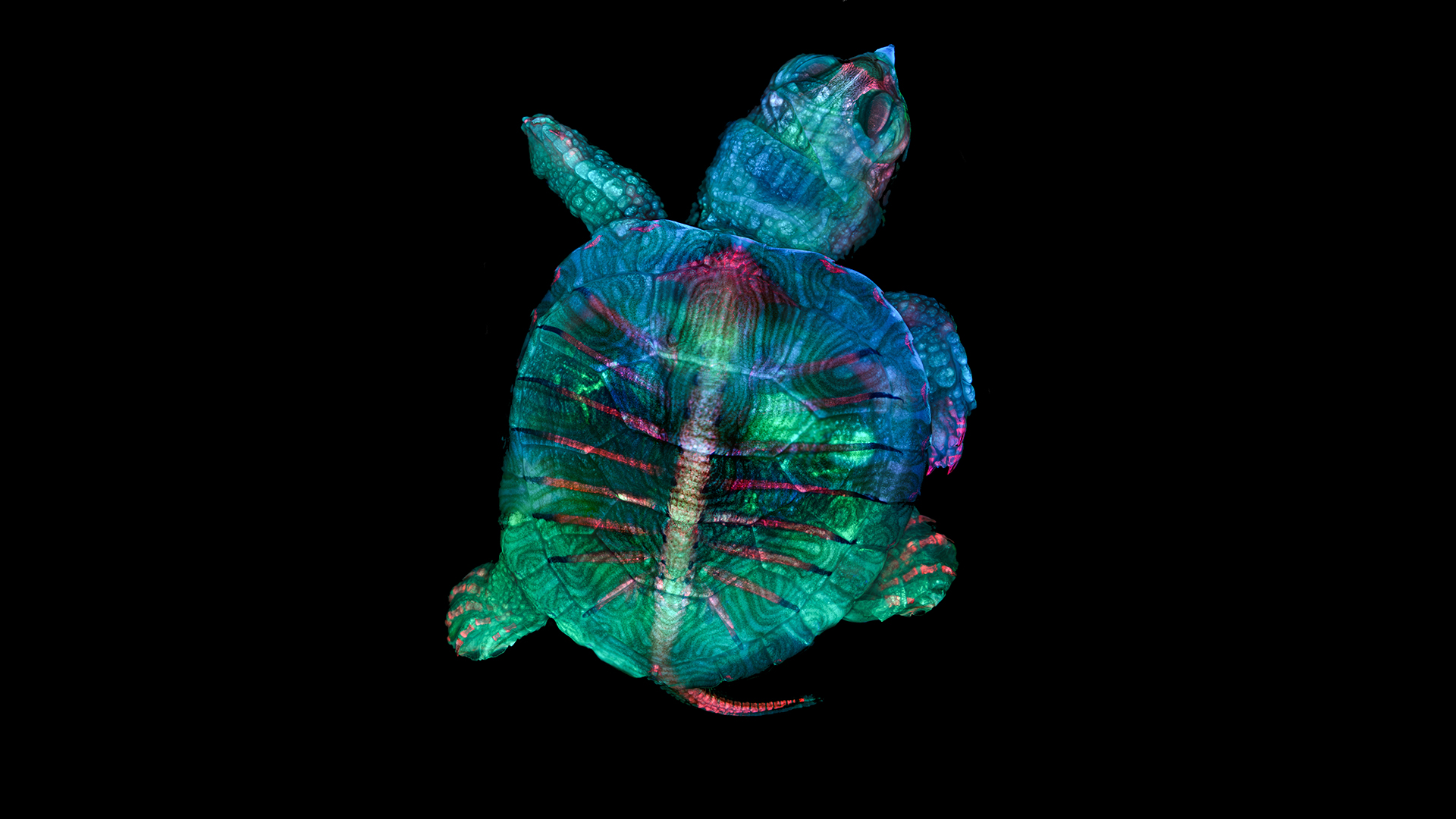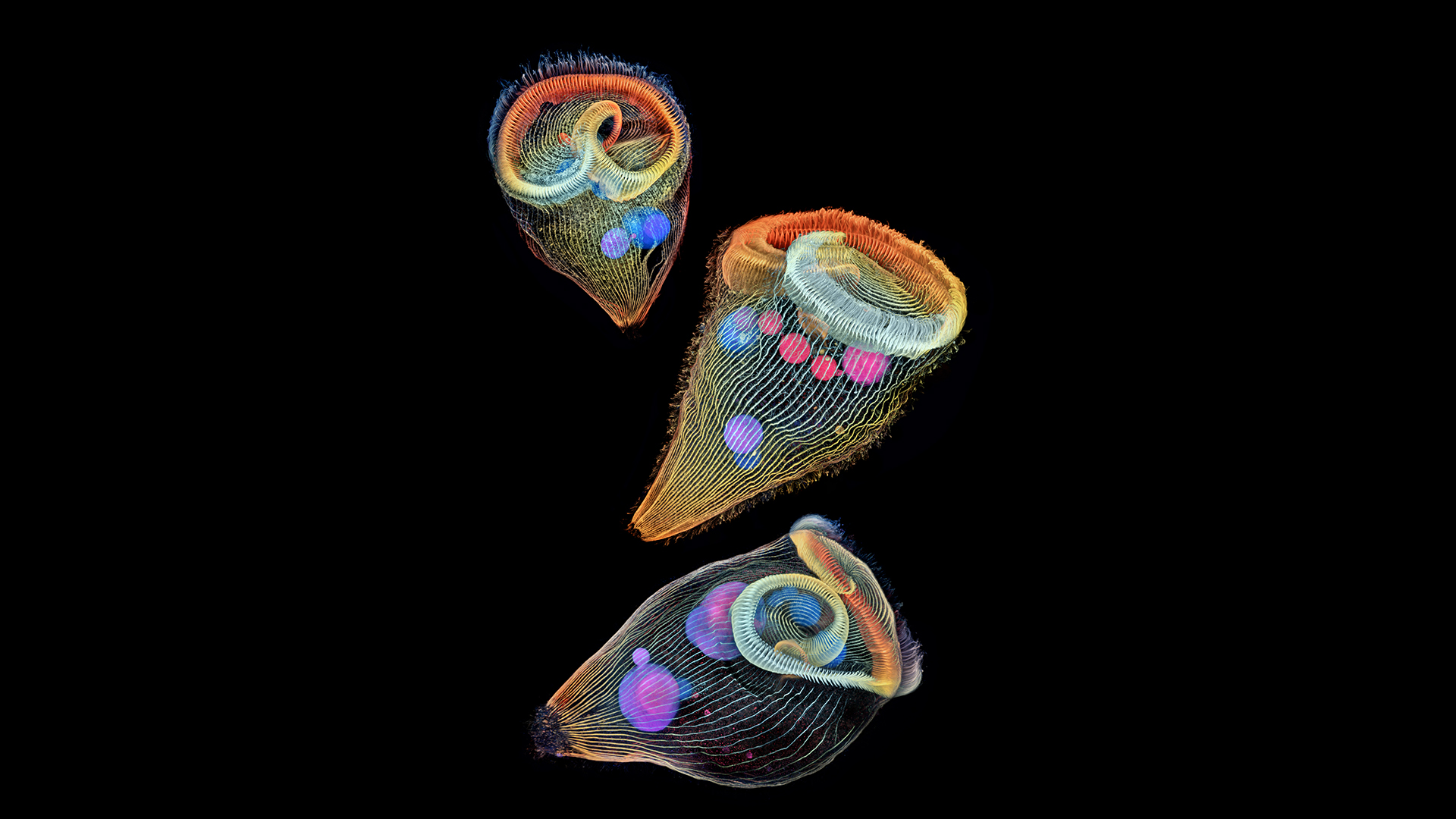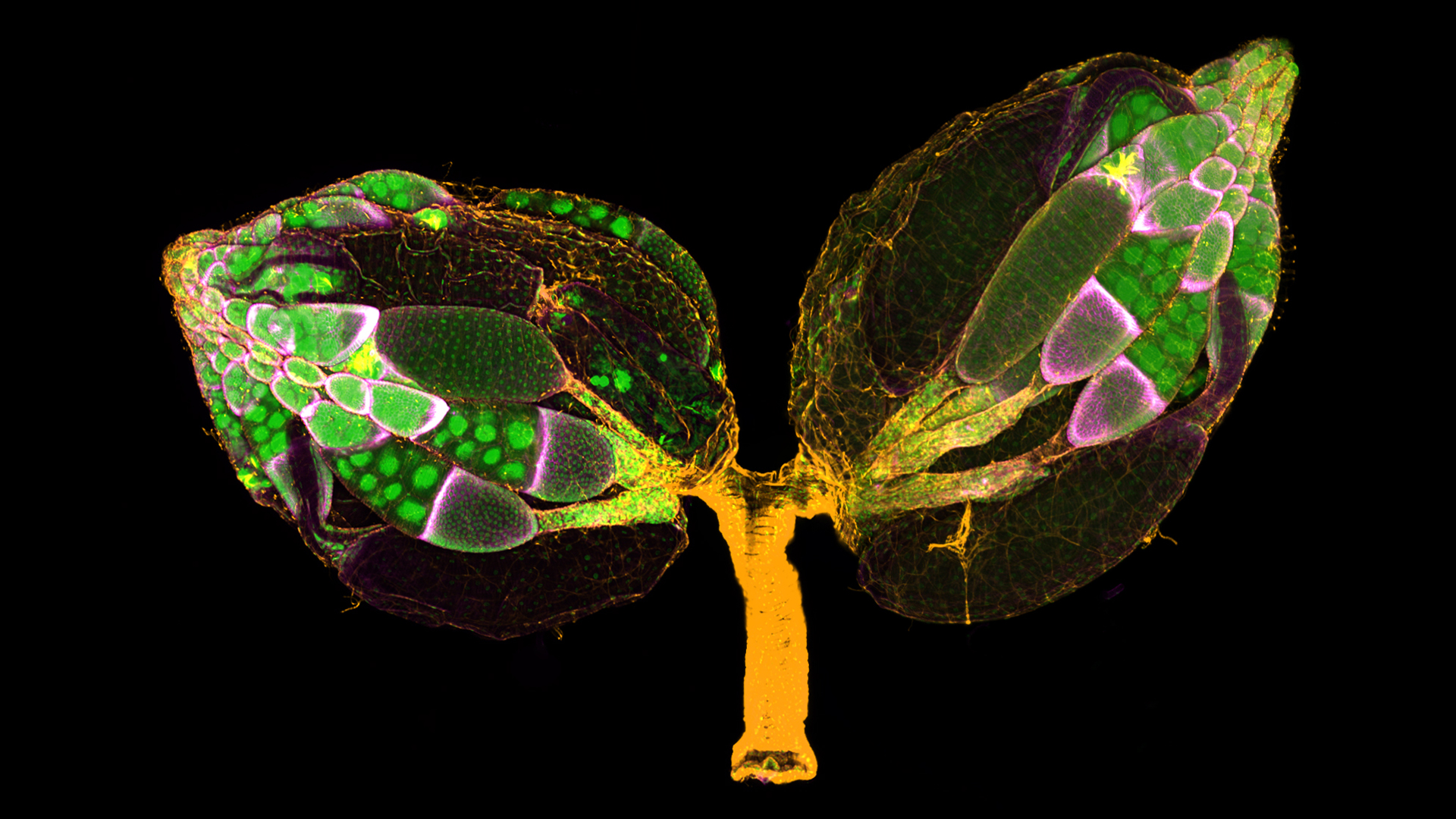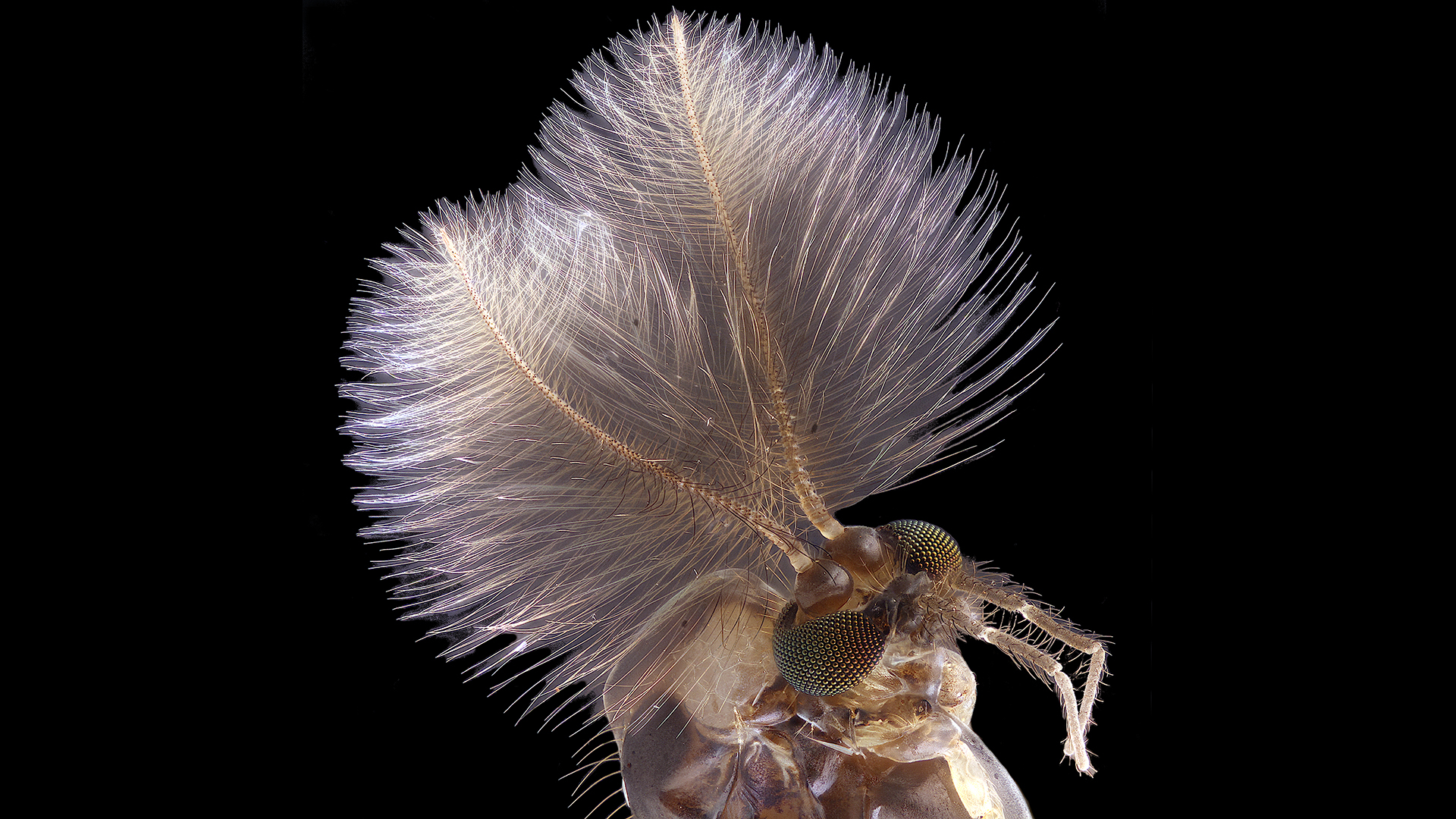Fluorescent, Rainbow-Colored Turtle Embryo Earns Microscope Photo Contest's Top Prize
The annual Nikon's Small World contest celebrates the astonishing beauty in the very small.

Technicolor photos of delicate embryos, feathery mosquito headgear, a spider's facial "hair" and an explosion of light in a frozen water droplet were just a few of the standout images in this year's Nikon Small World microphotography contest.
The competition's top prize went to a colorful view of a developing turtle embryo; the tiny creature measured only 1 inch (3 centimeters) long, according to the contest website. Teresa Zgoda, a microscopy technician, and Teresa Kugler, a recent graduate of the Rochester Institute of Technology in Rochester, New York, captured the image as part of an embryology course they were taking at the Marine Biological Laboratory in Woods Hole, Massachusetts.
Vivid pink hues highlight the growing embryo's skeleton, while blue and green reveal the textures and patterns in its skin and shell. To create the image, Kugler and Zgoda combined fluorescence and stereo microscopy — an optical imaging technique — according to the website.
Related: Magnificent Microphotography: 50 Tiny Wonders
Now in its 45th year, the 2019 contest awarded prizes and honorable mentions to 86 photos selected from more than 2,000 entries, which were submitted by scientists and artists from nearly 100 countries worldwide, contest representatives said in a statement.
"Our goal has always been to show the world how art and science intersect," said Nikon Instruments representative Eric Flem. "As new imaging and microscopy techniques develop over the years, our winners showcase these technology advances more and more creatively. First place this year is no exception," Flem added.
To produce the highly detailed photo of the delicate turtle embryo, Zgoda and Kugler created hundreds of images that were then stacked together.
Sign up for the Live Science daily newsletter now
Get the world’s most fascinating discoveries delivered straight to your inbox.



Trumpet-shaped, single-cell organisms called stentors glowed in the image that nabbed second place. Ringing these microscopic freshwater "trumpets" are cilia, or fine hairs, that the organisms use for swimming and eating. Photographer Igor Siwanowicz, a research scientist with the Howard Hughes Medical Institute's Janelia Research Campus in Ashburn, Virginia, turned to confocal microscopy to capture these cilia. This microphotography technique blocks some of the light bathing the subject, so that small portions are illuminated and in focus, according to the statement.
Third place went to another photo of an embryo: that of an alligator. But unlike the turtle embryo image, this one illuminates not only the embryo's skeleton, but also the delicate traceries of its developing nervous system. Branching neural tendrils are visible throughout its body; the clusters are especially dense around the alligator embryo's mouth and in its arms.
Other remarkable views of tiny wonders include the astonishingly feather-like fronds of a male mosquito's antennae; spiraling structures in a cross-section of a tulip bud; fruit fly ovaries; and a mushroom-shaped crystal suspended inside a piece of quartz.
You can see this year's winning images, honorable mentions and other notable entries on the Nikon Small World website.
- Wee Wonders: Top 20 Nikon Small World Contest Photos
- Amazing Look at Fruit Fly Eye (Photo)
- Tiny Life Revealed in Stunning Microscope Photos
Originally published on Live Science.


Mindy Weisberger is an editor at Scholastic and a former Live Science channel editor and senior writer. She has reported on general science, covering climate change, paleontology, biology and space. Mindy studied film at Columbia University; prior to Live Science she produced, wrote and directed media for the American Museum of Natural History in New York City. Her videos about dinosaurs, astrophysics, biodiversity and evolution appear in museums and science centers worldwide, earning awards such as the CINE Golden Eagle and the Communicator Award of Excellence. Her writing has also appeared in Scientific American, The Washington Post and How It Works Magazine. Her book "Rise of the Zombie Bugs: The Surprising Science of Parasitic Mind Control" will be published in spring 2025 by Johns Hopkins University Press.









